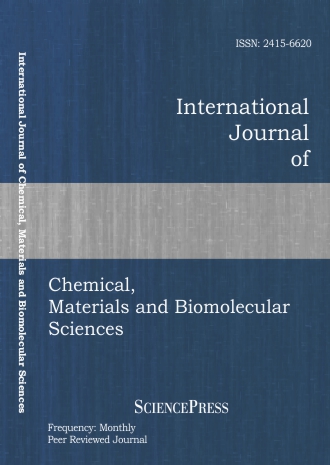
Scholarly
Volume:9, Issue: 12, 2015 Page No: 1398 - 1404
International Journal of Chemical, Materials and Biomolecular Sciences
ISSN: 2415-6620
1095 Downloads
The Effects and Interactions of Synthesis Parameters on Properties of Mg Substituted Hydroxyapatite
In this study, the effects and interactions of reaction time and capping agent assistance during sol-gel synthesis of magnesium substituted hydroxyapatite nanopowder (MgHA) on hydroxyapatite (HA) to β-tricalcium phosphate (β-TCP) ratio, Ca/P ratio and mean crystallite size was examined experimentally as well as through statistical analysis. MgHA nanopowders were synthesized by sol-gel technique at room temperature using aqueous solution of calcium nitrate tetrahydrate, magnesium nitrate hexahydrate and potassium dihydrogen phosphate as starting materials. The reaction time for sol-gel synthesis was varied between 15 to 60 minutes. Two process routes were followed with and without addition of triethanolamine (TEA) in the solutions. The elemental compositions of as-synthesized powders were determined using X-ray fluorescence (XRF) spectroscopy. The functional groups present in the assynthesized MgHA nanopowders were established through Fourier Transform Infrared Spectroscopy (FTIR). The amounts of phases present, Ca/P ratio and mean crystallite sizes of MgHA nanopowders were determined using X-ray diffraction (XRD). The HA content in biphasic mixture of HA and β-TCP and Ca/P ratio in as-synthesized MgHA nanopowders increased effectively with reaction time of sols (p<0.0001, two way ANOVA), however, these were independent of TEA addition (p>0.15, two way ANOVA). The MgHA nanopowders synthesized with TEA assistance exhibited 14 nm lower crystallite size (p<0.018, 2 sample t-test) compared to the powder synthesized without TEA assistance.
References:
[1] L. B. Hossein-Nezhad, A. Maghbooli, Z. Bandarian, F. Mortaz, S.